
Tawang: The Himalayan Gem of India
Explore Tawang in India, a Himalayan paradise where majestic landscapes meet rich Buddhist heritage and vibrant local culture.
Tawang, nestled in the northeastern state of Arunachal Pradesh, is a captivating blend of natural beauty and cultural richness. Surrounded by the majestic Himalayas, Tawang offers visitors breathtaking landscapes, serene monasteries, and a glimpse into the unique lives of the Monpa people. The town itself is perched at an altitude of about 10,000 feet, providing visitors with panoramic views of snow-capped mountains, lush valleys, and crystal-clear rivers. The Tawang Monastery, one of the largest in India, is a must-visit. Established in the 17th century, this monastery is not only a spiritual center but also a treasure trove of ancient manuscripts, thangka paintings, and a giant statue of Lord Buddha. The monastery offers a peaceful retreat and a chance to witness the daily rituals and practices of the Buddhist monks. Nature enthusiasts will find Tawang a paradise with its numerous trekking trails, pristine lakes such as the Shonga-tser Lake, and the stunning Nuranang Waterfalls. The best time to visit is from March to October, when the weather is pleasant and the rhododendrons are in full bloom. Tawang also hosts the vibrant Torgya and Losar festivals, where traditional music, dance, and local cuisine come alive, providing an immersive cultural experience.
Local tips in Tawang
- Carry warm clothing, even in summer, as temperatures can drop drastically.
- Permits are required for visiting Arunachal Pradesh, ensure you obtain them in advance.
- Try the local Monpa cuisine, especially the thukpa and momos.
- Travel with a local guide to get the most out of your visit to the remote areas.
- Respect local customs and traditions, especially when visiting monasteries and during festivals.
Tawang: The Himalayan Gem of India
Tawang, nestled in the northeastern state of Arunachal Pradesh, is a captivating blend of natural beauty and cultural richness. Surrounded by the majestic Himalayas, Tawang offers visitors breathtaking landscapes, serene monasteries, and a glimpse into the unique lives of the Monpa people. The town itself is perched at an altitude of about 10,000 feet, providing visitors with panoramic views of snow-capped mountains, lush valleys, and crystal-clear rivers. The Tawang Monastery, one of the largest in India, is a must-visit. Established in the 17th century, this monastery is not only a spiritual center but also a treasure trove of ancient manuscripts, thangka paintings, and a giant statue of Lord Buddha. The monastery offers a peaceful retreat and a chance to witness the daily rituals and practices of the Buddhist monks. Nature enthusiasts will find Tawang a paradise with its numerous trekking trails, pristine lakes such as the Shonga-tser Lake, and the stunning Nuranang Waterfalls. The best time to visit is from March to October, when the weather is pleasant and the rhododendrons are in full bloom. Tawang also hosts the vibrant Torgya and Losar festivals, where traditional music, dance, and local cuisine come alive, providing an immersive cultural experience.
When is the best time to go to Tawang?
Iconic landmarks you can’t miss
Tawang Monastery
Discover the serene beauty and spiritual depth of Tawang Monastery, a breathtaking Himalayan treasure in Arunachal Pradesh.
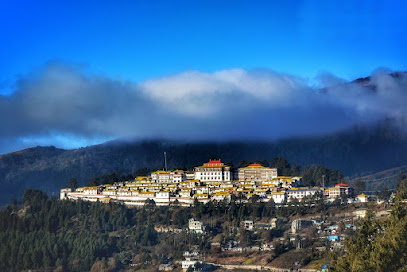
Tawang War Memorial
Explore the Tawang War Memorial, a serene tribute to Indian soldiers, offering breathtaking views and an immersive historical experience in Arunachal Pradesh.
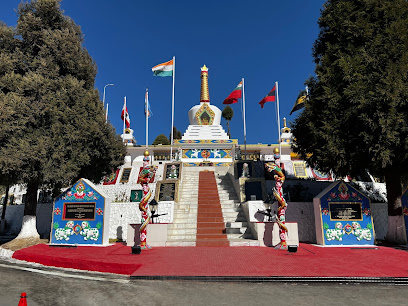
Jung falls (Nuranang falls)
Experience the breathtaking beauty of Jung Falls, a must-visit natural wonder in Tawang, India, perfect for nature lovers and adventure seekers.

Jaswant Garh War Memorial(In Honour of the Rifleman Jaswant Singh Rawat)- Nuranang, Tawang District, Arunachal Pradesh, India
Explore the Jaswant Garh War Memorial, a serene tribute to valor amid the breathtaking landscapes of Arunachal Pradesh, honoring the courage of Rifleman Jaswant Singh Rawat.

Giant Buddha Statue
Explore the Giant Buddha Statue in Tawang, a serene spiritual landmark surrounded by breathtaking Himalayan beauty, perfect for reflection and cultural immersion.

Dondrub Homestay & Resort
Experience the serene beauty and rich culture of Arunachal Pradesh at Dondrub Homestay & Resort, where comfort meets adventure in a tranquil setting.

Tourist Lodge, Tawang (Govt.)
Experience the tranquil beauty of Tawang at the Tourist Lodge, where comfort meets breathtaking Himalayan landscapes.

Hotel Tawang Heights
Discover the perfect blend of comfort and adventure at Hotel Tawang Heights, your gateway to the stunning landscapes of Tawang, Arunachal Pradesh.

Panga Teng Tso lake
Experience the tranquil beauty of Panga Teng Tso Lake in Arunachal Pradesh, a hidden gem surrounded by stunning mountain landscapes.

Bumla Pass
Explore Bumla Pass, a breathtaking mountain pass in Arunachal Pradesh, offering stunning views, rich culture, and an unforgettable Himalayan adventure.

Hot Spring, Dirang
Discover the healing waters and breathtaking landscapes of Dirang Hot Springs, a hidden paradise in Assam, perfect for relaxation and rejuvenation.

Nyukmadung War Memorial
Explore the serene Nyukmadung War Memorial, a heartfelt tribute to bravery amidst breathtaking Himalayan landscapes.
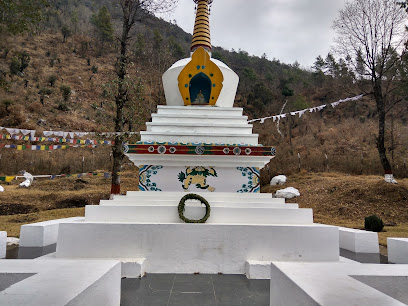
Thupsung Dhargye Buddhist Monastery - Dirang, West Kameng District, Arunachal Pradesh, India
Experience peace and spirituality at Thupsung Dhargye Buddhist Monastery in Arunachal Pradesh, surrounded by stunning landscapes and rich cultural heritage.

Dharma Coffee House and Library
Discover tranquility at Dharma Coffee House and Library in Tawang, where artisanal coffee meets a cozy library atmosphere amidst stunning landscapes.

TAWANG WELCOME GATE ARUNACHAL PRADESH
Experience the charm and history at Tawang Welcome Gate, the majestic entry to Arunachal Pradesh's cultural gem, Tawang.

Unmissable attractions to see
Indira Gandhi Park
Discover tranquility at Indira Gandhi Park, a lush green haven in Itanagar, Arunachal Pradesh, perfect for relaxation and family outings.
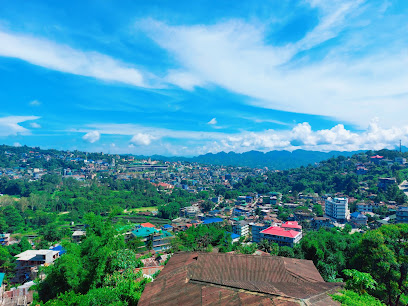
Tawang War Memorial
Explore the Tawang War Memorial, a serene tribute to Indian soldiers, amidst the breathtaking landscapes of Arunachal Pradesh.

Jung falls (Nuranang falls)
Experience the breathtaking beauty of Jung Falls, a hidden gem in Arunachal Pradesh, where nature's wonders unfold amidst serene landscapes.

Jaswant Garh War Memorial(In Honour of the Rifleman Jaswant Singh Rawat)- Nuranang, Tawang District, Arunachal Pradesh, India
Explore the Jaswant Garh War Memorial in Tawang, a serene tribute to bravery amidst breathtaking Himalayan landscapes.

Gompa Buddhist Temple - Itanagar, Arunachal Pradesh, India
Discover tranquility at the Gompa Buddhist Temple in Itanagar, a stunning blend of spirituality and natural beauty in Arunachal Pradesh.
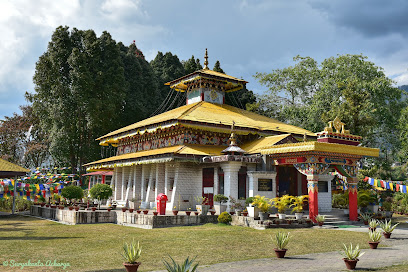
Bumla Pass- India
Discover the breathtaking beauty and rich heritage of Bumla Pass in Tawang, a high-altitude gem in the Himalayas that captivates all who visit.

Bomdila Buddhist Monastery - Bomdila, West Kameng District, Arunachal Pradesh, India
Discover the peaceful oasis of Bomdila Buddhist Monastery in Arunachal Pradesh, where spirituality meets stunning Himalayan vistas.

Ita Fort
Explore the historical charm of Ita Fort, a significant landmark in Itanagar, Arunachal Pradesh, showcasing the region's rich cultural heritage.

TDL Buddhist Monastery
Explore the serene TDL Buddhist Monastery in Dirang – a haven of tranquility, spirituality, and breathtaking views amidst the Himalayas.

Mandala Top
Discover the serene beauty of Mandala Top, a must-visit viewpoint in the Indian Himalayas, offering breathtaking panoramas and a tranquil escape.

Panga Teng Tso lake
Experience the serene beauty of Panga Teng Tso Lake in Arunachal Pradesh, a tranquil destination surrounded by majestic mountains and lush nature.

Bomdila Pass
Explore Bomdila Pass: A breathtaking mountain pass in Arunachal Pradesh, offering stunning views, cultural experiences, and thrilling adventures.

Bumla Pass
Experience the breathtaking beauty and rich culture at Bumla Pass, a majestic mountain gateway in the Himalayas.

Buddha Park
Discover tranquility and spiritual reflection at Buddha Park in Bomdila, Arunachal Pradesh, surrounded by breathtaking Himalayan beauty.

Hot Spring, Dirang
Experience the rejuvenating power of nature at Dirang Hot Springs, Assam's serene thermal waters surrounded by breathtaking landscapes.

Essential places to dine
Dondrub Homestay & Resort
Discover tranquility at Dondrub Homestay & Resort in Arunachal Pradesh – your perfect getaway surrounded by nature's beauty.

HOTEL MON-VALLEY & RESTAURANT
Experience authentic Tibetan hospitality at Hotel Mon-Valley & Restaurant in Tawang – where culture meets comfort amidst stunning mountain vistas.

Hotel Menda-La Tawang
Experience comfort and exquisite local cuisine at Hotel Menda-La Tawang – your perfect retreat in Arunachal Pradesh.

Flying Dragon Cafeteria
Savor authentic regional flavors at Flying Dragon Cafeteria in Dirang, Arunachal Pradesh - A must-visit culinary gem for every traveler.

Dharma Coffee House and Library
Discover serenity at Dharma Coffee House and Library in Tawang—where great coffee meets captivating literature amidst breathtaking views.

Dragon Restaurant
Discover authentic Chinese flavors at Dragon Restaurant in Tawang - where every dish tells a story.

Maa Kali Hotel
Experience the rich flavors of Bengali cuisine at Maa Kali Hotel in Tawang's vibrant Old Market - perfect for families and food lovers alike.

Zinik Hotel & Restaurant
Experience authentic Arunachali cuisine at Zinik Hotel & Restaurant in Rupa, where comfort meets culinary excellence amidst stunning natural beauty.

Ama Restaurant
Discover Ama Restaurant in Arunachal Pradesh: A must-visit destination for authentic local cuisine amidst stunning natural beauty.

Hotel Tawang & Parcel Kitchen
Savor the best of Indian flavors at Hotel Tawang & Parcel Kitchen in Kalyan - A must-visit culinary destination for every food lover.

Soinam's House Of Cakes
Experience delightful cakes and authentic Chinese cuisine at Soinam's House Of Cakes in Tawang - where flavor meets tradition.
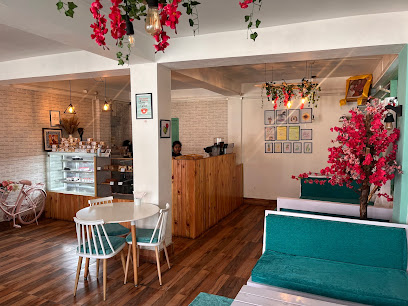
Northeast flavours
Discover authentic flavors at Northeast Flavours in Tawang - a culinary journey through Arunachal Pradesh's rich traditions.

Hotel Yul Pemakhar
Discover comfort and culture at Hotel Yul Pemakhar near Tawang Monastery - your serene retreat in Arunachal Pradesh.

GTK KITCHEN ( ghatak kitchen from Delhi )
Discover authentic local flavors at GTK Kitchen in Tawang – where every dish tells a story.

Sumi Naga Kitchen
Experience authentic Naga cuisine at Sumi Naga Kitchen in Bomdila - where tradition meets flavor in every dish.

Markets, malls and hidden boutiques
Tawang Monastery
Discover spiritual serenity at Tawang Monastery, the largest Buddhist monastery in India, surrounded by breathtaking Himalayan landscapes.

Tawang War Memorial
Explore the Tawang War Memorial, a poignant tribute to Indian soldiers, nestled in the breathtaking landscapes of Arunachal Pradesh.

Giant Buddha Statue
Discover the serene beauty and cultural significance of the Giant Buddha Statue in Tawang, a must-see tourist attraction in India.
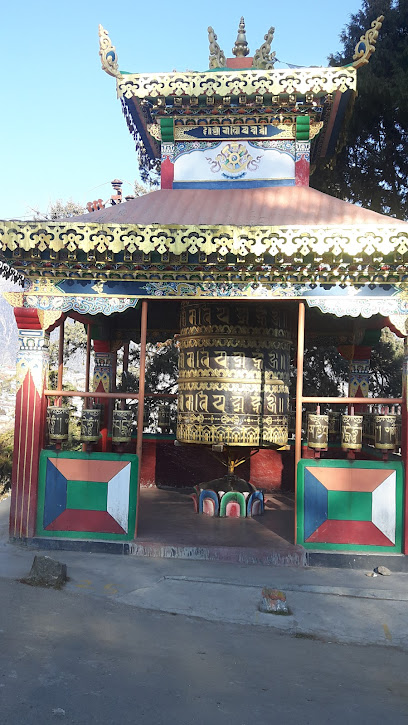
Dondrub Homestay & Resort
Discover the serene beauty of Arunachal Pradesh at Dondrub Homestay & Resort, where comfort meets local culture in a tranquil setting.

Hotel Tawang Heights
Discover tranquility and comfort at Hotel Tawang Heights, your gateway to the enchanting landscapes of Arunachal Pradesh.

Hotel Menda-La Tawang
Discover the essence of Tawang at Hotel Menda-La, where comfort meets local culture in the heart of Arunachal Pradesh.

HOTEL TAWANG HOLIDAY
Experience the charm of Tawang at Hotel Tawang Holiday, your cozy retreat amidst the breathtaking landscapes of Arunachal Pradesh.

Dharma Coffee House and Library
Discover serenity at Dharma Coffee House and Library in Tawang, where aromatic brews meet a treasure trove of books, perfect for relaxation and cultural exploration.

Bumla inn
Discover comfort and local charm at Bumla Inn in Tawang, the perfect base for exploring the breathtaking beauty of Arunachal Pradesh.

Tawang Tours
Explore the scenic beauty and vibrant culture of Assam with Tawang Tours, your gateway to unforgettable travel experiences.

Old Market
Discover the vibrant culture and authentic shopping experience at Old Market in Arunachal Pradesh, a must-visit for every traveler.
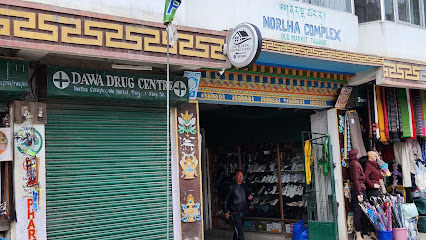
The Oak Tawang
Experience serene hospitality at The Oak Tawang, your gateway to the breathtaking landscapes and vibrant culture of Arunachal Pradesh.

Tashikhang Homestay,Tawang
Experience the warmth of local hospitality at Tashikhang Homestay, nestled in Tawang's picturesque landscapes, perfect for an authentic retreat.

Taktsang Gompa Tawang
Explore the breathtaking Taktsang Gompa in Tawang, a revered historical landmark blending rich culture and stunning Himalayan vistas.

HOTEL MONYUL TAWANG
Discover tranquility and comfort at Hotel Monyul Tawang, your gateway to the majestic landscapes of Arunachal Pradesh.

Essential bars & hidden hideouts
HOTEL MON-VALLEY & RESTAURANT
Experience the best of Tawang at Hotel Mon-Valley & Restaurant with cozy rooms and authentic Tibetan and Chinese dining.

Dragon Restaurant
Discover the flavors of authentic Chinese cuisine in Tawang at the charming Dragon Restaurant, a culinary delight set in the heart of Arunachal Pradesh.

Dharma Coffee House and Library
Experience the perfect blend of coffee and literature at Dharma Coffee House and Library in Tawang, a cozy retreat for travelers.

13 Old Spirit Pub, Cafe & Karaoke
Discover the lively spirit of Itanagar at 13 Old Spirit Pub, where delicious cuisine meets unforgettable karaoke nights in a vibrant atmosphere.

Maa Kali Hotel
Explore the delightful Bengali cuisine at Maa Kali Hotel in Arunachal Pradesh, where each meal is a celebration of flavors and family.

Phun’s Cafe & Bike rental
Discover local cuisine and breathtaking bike trails at Phun’s Cafe & Bike Rental in Arunachal Pradesh, your gateway to adventure and flavor.

Vivanta Arunachal Pradesh, Tawang
Discover luxury and tranquility at Vivanta Arunachal Pradesh, Tawang, where stunning landscapes meet rich cultural heritage.

Soinam's House Of Cakes
Experience the delightful fusion of café culture and authentic Chinese cuisine at Soinam's House Of Cakes in the breathtaking Tawang.

Orange bar
Discover the lively spirit of Tawang at Orange Bar, where local flavors meet a vibrant nightlife experience in Arunachal Pradesh.

Northeast flavours
Experience the authentic flavors of Northeast India at Northeast Flavours, a culinary treasure in the heart of Tawang, Arunachal Pradesh.
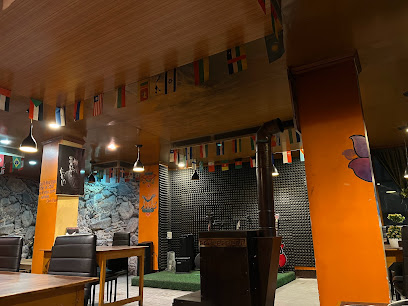
Hotel Buddha
Discover the tranquil charm of Hotel Buddha, a vegetarian-friendly retreat in the heart of Tawang, Arunachal Pradesh, surrounded by breathtaking landscapes.

66° F Lounge Bar
Experience the vibrant nightlife of Bomdila at 66° F Lounge Bar, where exquisite drinks meet a cozy ambiance amidst stunning landscapes.

Sangha Elated
Experience the serene beauty of Tawang at Sangha Elated, where exquisite coffee meets breathtaking views in Arunachal Pradesh.

GTK KITCHEN ( from Delhi )
Experience authentic Indian flavors at GTK Kitchen, Tawang's culinary gem, offering a delightful blend of tradition and innovation in every dish.

Be Happy Cafe, Tawang
Experience the warm ambiance and rich flavors at Be Happy Cafe in Tawang, a delightful retreat for tourists seeking relaxation and local culture.

History of Tawang
-
Tawang, nestled in the northeastern state of Arunachal Pradesh, India, holds a significant place in history due to its ancient roots and strong Tibetan cultural influence. The region has been historically inhabited by the Monpa people, an ethnic group with a rich cultural heritage closely linked to Tibetan Buddhism. The influence of Tibetan culture is evident in the region's architecture, festivals, and daily practices.
-
One of the most iconic landmarks in Tawang is the Tawang Monastery, also known as Galden Namgyal Lhatse. Founded in 1680-81 by Merak Lama Lodre Gyatso in accordance with the wishes of the 5th Dalai Lama, the monastery serves as a key religious and cultural center for the Monpa people. It is the largest monastery in India and the second-largest in the world, after the Potala Palace in Lhasa, Tibet.
-
Tawang is also famously known as the birthplace of the 6th Dalai Lama, Tsangyang Gyatso, who was born in 1683 in Urgelling Monastery, located near the main town of Tawang. His life and poetry continue to be celebrated and studied, adding to the spiritual significance of Tawang in the Buddhist world.
-
During the British colonial era, Tawang came under British administration as per the 1914 Simla Agreement, which defined the McMahon Line as the boundary between British India and Tibet. This agreement was significant as it laid the groundwork for the modern-day border disputes between India and China.
-
Tawang was a focal point during the 1962 Sino-Indian War. The region witnessed heavy fighting and was briefly occupied by Chinese forces. The war left a lasting impact on Tawang, and remnants of bunkers and war artifacts can still be found in the area, serving as poignant reminders of the conflict.
-
In contemporary India, Tawang holds strategic importance due to its proximity to the India-China border. It is also a key tourist destination, attracting visitors with its stunning landscapes, rich cultural heritage, and historical landmarks. The region continues to thrive as a center of Buddhist learning and Monpa culture, drawing scholars, pilgrims, and tourists alike.
-
Tawang is known for its vibrant festivals, the most notable being Torgya and Losar. Torgya is a three-day festival held at Tawang Monastery, featuring traditional dances and rituals to ward off evil spirits and bring prosperity. Losar, the Tibetan New Year, is celebrated with great enthusiasm, marked by colorful processions, traditional music, and dance performances, reflecting the region's deep-rooted cultural traditions.
Tawang Essentials
-
Tawang is located in the northeastern state of Arunachal Pradesh in India. The nearest airport is Tezpur Airport in Assam, approximately 330 kilometers away. From Tezpur, you can reach Tawang by road, which takes around 11 to 14 hours depending on weather and road conditions. Another option is to fly into Lokpriya Gopinath Bordoloi International Airport in Guwahati, Assam, and then take a bus or hire a taxi to Tawang. The distance from Guwahati to Tawang is about 480 kilometers. Helicopter services are also available from Guwahati to Tawang, offering a quicker but more expensive option.
-
Tawang is a small town, and many attractions are within walking distance. Local taxis and shared jeeps are readily available for longer trips and are relatively inexpensive. Public buses connect Tawang with nearby towns and villages, but they can be infrequent. Renting a car with a driver is another convenient option for exploring the surrounding areas and offers more flexibility.
-
The official currency in India is the Indian Rupee (INR). While some hotels and larger shops in Tawang accept credit cards, it is advisable to carry cash, especially for smaller establishments and rural areas. ATMs are available in Tawang, but it is wise to withdraw sufficient cash in larger towns like Tezpur or Guwahati before traveling to ensure you have enough funds.
-
Tawang is generally a safe destination for tourists. However, like any travel destination, it is advisable to take standard precautions. Avoid walking alone at night in unfamiliar areas and keep an eye on your belongings in crowded places. There are no specific high-crime areas targeting tourists in Tawang, but it is always best to stay vigilant and aware of your surroundings.
-
In case of emergency, dial 112 for immediate assistance. The local police station and medical facilities are available in Tawang. It is recommended to have travel insurance that covers medical emergencies. For minor health issues, there are pharmacies in the town where you can purchase over-the-counter medications.
-
Fashion: Do dress modestly, especially when visiting religious sites. Avoid wearing revealing clothing. Religion: Do respect local customs and traditions. Always remove your shoes before entering monasteries and religious sites. Public Transport: Do be respectful and give up your seat to elderly passengers. Don't eat or drink on public transport. Greetings: Do greet people with a 'Namaste' or a simple handshake. A slight bow of the head is also a sign of respect. Eating & Drinking: Do try local delicacies and accept food offerings graciously. Don't refuse hospitality, as it is considered impolite.
-
To experience Tawang like a local, visit the local markets where you can buy traditional Monpa handicrafts and fresh produce. Engage with locals, as they are often friendly and willing to share stories about Tawang's history and culture. Don't miss visiting the Tawang Monastery, the largest monastery in India and a significant center for Tibetan Buddhism. For a unique experience, take a scenic trek to the Bumla Pass, which offers stunning views of the surrounding mountains and valleys. Also, try attending the Torgya Festival if your visit coincides with it, to witness vibrant traditional dances and rituals.
Trending Landmarks in Tawang
-
Tawang Monastery
-
Tawang War Memorial
-
Jung falls (Nuranang falls)
-
Jaswant Garh War Memorial(In Honour of the Rifleman Jaswant Singh Rawat)- Nuranang, Tawang District, Arunachal Pradesh, India
-
Giant Buddha Statue
-
Dondrub Homestay & Resort
-
Tourist Lodge, Tawang (Govt.)
-
Hotel Tawang Heights
-
Panga Teng Tso lake
-
Bumla Pass
-
Hot Spring, Dirang
-
Nyukmadung War Memorial
-
Thupsung Dhargye Buddhist Monastery - Dirang, West Kameng District, Arunachal Pradesh, India
-
Dharma Coffee House and Library
-
TAWANG WELCOME GATE ARUNACHAL PRADESH
Nearby Cities to Tawang
-
Things To Do in Mongar
-
Things To Do in Jakar
-
Things To Do in Bumthang
-
Things To Do in Trongsa
-
Things To Do in Guwahati
-
Things To Do in Itanagar
-
Things To Do in Wangdue Phodrang
-
Things To Do in Punakha
-
Things To Do in Thimphu
-
Things To Do in Shillong
-
Things To Do in Paro
-
Things To Do in Phuentsholing
-
Things To Do in Sylhet
-
Things To Do in Kohima
-
Things To Do in Gangtok









